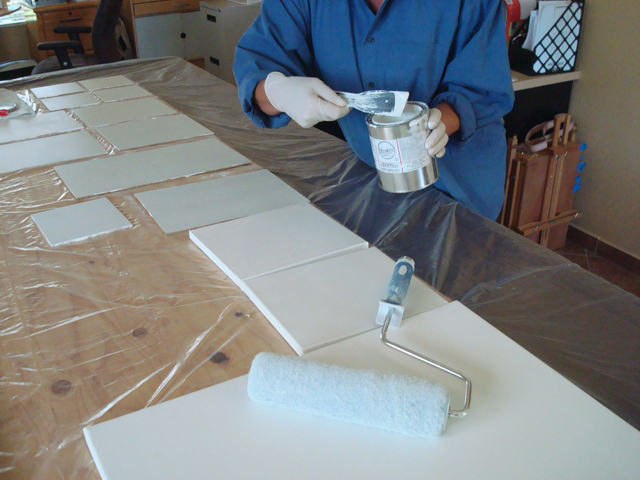How I apply Gamblin’s© Oil Ground to cover hardboard panels.
Using a paint spatula, I apply a thin coat directly to my cut hardboard panel (surfaces-supports). After this coat dries, (1-3 days), I will apply one more. No need to prep the hardboard with PVA size.
Why I Prefer An Oil Ground Over Using Acrylic Gesso.
- Acrylic gesso creates a very absorbent surface which causes the oil paint to sink into it leaving a dull finish and makes applying paint more difficult as it does not go on evenly.
- Oil ground gives me a very brilliant, pure color pigment. This is because it stays on top of the surface. My colors remain pure and the transparency of certain pigments are richer. The paint dries into a more glossy finish, rather than absorb into the prepared surface which causes it to dull.
- I can add beautiful textural effects on this surface that makes all the difference in the final painting.
- This brand is much safer to use than traditional lead ground, which is toxic if not used properly.
- I also apply this to store bought canvas to make it archival quality too. The only step needed for canvas prior to adding the ground, is it first must be sized with PVA (Poly Vinyl Acetate) to keep the cotton or linen fibers from absorbing your oil paint. Many artists do not realize that without preparing the canvas this way, you are in danger of the oil paint seeping into the canvas and eventually eating away the fabric.
- With making my own panels, I can cut many different sizes, stack them easily for storage, and use them to paint outside (plein air). The lighter weight, makes shipping less expensive for my collectors.
- My panels/stretched canvas are archival quality. This guarantees my oil paintings will not fade, crack, peel, absorb into the surface or dull over time.

